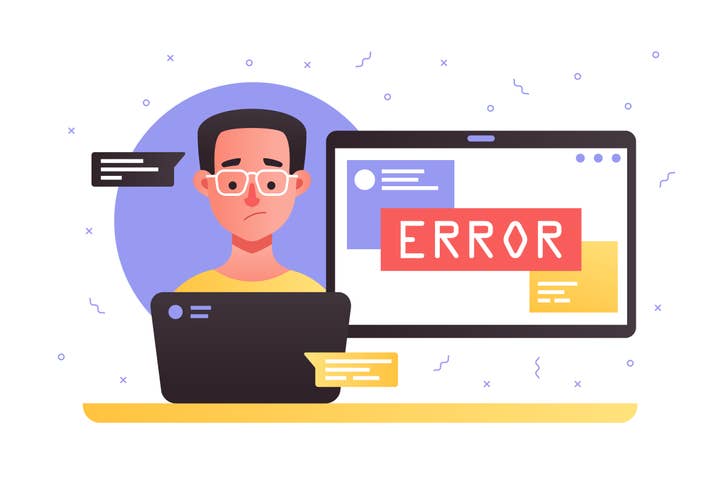How game developers can help their players understand network issues
Mathieu Duperré looks at how players perceive problems like lag and latency, and what to do when issues arise
If you’ve ever experienced lag or latency issues in an online multiplayer game and felt like you’ve been cheated out of a win as a result, you’re not alone, as most players have experienced these issues at least once.
Despite substantial improvements to global network infrastructure, connectivity issues are still a major issue facing the global video game industry, with many players affected by issues that are out of their control.
There’s an urgency then, for game developers not only to do more to mitigate these connectivity issues, but to communicate with gamers and help them better understand the various nuances around connectivity issues such as lag and latency, as the game developer will often be blamed for connectivity issues, which means uncertainty around who’s at fault for these issues could be causing game studios an unwarranted PR bruising.
Thankfully, there are some pretty straightforward steps that game developers can take to help improve their players’ understanding of network issues, as well as address some of the most common issues that result in players experiencing lag and latency.
Prioritise transparency
Keep players updated with any network issues and introduce network updates into your content calendar and dev updates.
When connectivity issues arise, more than half of online players blame game studios or the company managing those servers. In most cases, the biggest variable affecting latency is the distance between the player and the server they’re connected to, but there are plenty of factors that come into play ranging from network congestion/traffic and, of course, the strength and type of the player’s internet connection.
You should do your best to proactively educate players on your network
You should never assume that your players completely understand all of the nuances relating to connectivity, but you should do your best to proactively educate players on your network, how issues can arise, and the steps that players can take themselves to improve their connections. Failure to do so can risk reputational damage.
Depending on the size of your studio and its team, you can work alongside your community and/or social manager to keep players updated on any outages or issues, especially if they’re location specific. If you’ve made any significant changes to your network – such as a change of supplier or adjustments to your netcode – you may want to inform your community or communications manager so they can keep an eye on how any changes are impacting the community or received by players.
Rather than see this as a mundane task, you can introduce updates relating to your network and servers into a wider content and comms strategy. This is especially important for genres that rely on ultra-fast connections, such as fighting games and first person shooters, and you may be surprised to see how well players engage with such updates if it offers them to learn more about the important behind-the-scenes work that goes into creating their favourite games.
From developer blogs and newsletters to community platforms such as Discord and Reddit, studios have a variety of tools at their disposal to keep their community updated. If you’ve been struggling content ideas, you might even find that talking about your wider network usage gives you an interesting talking point for tech-savvy players.
Support your players
Let players know the steps they can take to potentially improve network issues when they encounter them.
When gamers do encounter lag and latency issues, they’ll often resort to the tried and tested method of turning whatever they’re playing off and on again. It’s simple steps like these that can be sometimes overlooked but are often the most effective at solving some network issues, although, in the case of turning it off and on again, players should be doing that to their router rather than the game they’re playing.
As for the other tips you can share with your players to help mitigate some of the issues around lag and latency, we’d recommend the following:
- Move over to a wired connection using an ethernet cable if they’re currently playing over a wireless connection.
- If they’re playing a high-spec game on PC or laptop, turn down the resolution settings when they play online.
- Depending on the distance between your gaming hardware and the router, consider buying a booster to improve your signal strength. Some ISPs will provide these for free if you complain nicely.
- Try and play with gamers on the same device type as connectivity issues are more common during crossplay.
- When was the last time their internet package was upgraded or even checked? ISPs regularly change their packages around – your players may be able to even save money and benefit from faster speeds if they’ve not changed their contract in a long time and better packages have become available since.
Make sure you have the right infrastructure
Position your servers to meet and exceed the requirements of your game.
As one of the easiest ways to improve connection speeds is to minimise the distance between your server locations and your players, you need to consider any regions where network traffic is going to be particularly heavy. When in doubt, it’s always safe to overprovision your server allocation at the launch of a new game to avoid any potential issues, so you have additional servers ready and waiting to handle any excess traffic. Edge computing is also one of the most effective ways of reducing connection distance.
Choosing the right infrastructure provider with a flexible package is also key. You should be able to overprovision at launch and scale back if needed, and decent hosting providers will only charge you for the server allocation that you actually use. If you’re launching a game from scratch, it goes without saying that you should avoid getting locked down into any lengthy contracts without having a reasonable estimate on your player base and how it might grow in the coming months.

You should also work with your infrastructure provider to help remedy any issues.
Smaller studios focused on developing quality multiplayer experiences should aim to find an infrastructure partner that can be treated as an extension of their own team. There are countless hiccups that you’re bound to encounter on your game dev journey and it’s inevitable that your multiplayer stack is going to require some tweaking along the way, so having a provider that you can reach quickly in case of issues can be a life saver.
Issues such as intermittent memory spikes at specific game moments may seem minor but can be easily missed and have the potential to cause major disruption if they’re not addressed quickly. You should also think carefully about the genre of your game and the experience you want your players to have, since this will inform your decisions in many areas of your multiplayer stack.
Similar to how we highlighted the importance of transparency around communicating network issues further above, there are content and community management opportunities around your netcode and server deployment strategy that you may wish to update players on as you roll out your game, especially if you’ve already got an engaged community of players pre-launch and plenty of wishlist requests on Steam.
Mathieu Duperré is CEO of Edgegap, which he created in 2018. Prior to founding Edgegap, he spent over six years at Cisco as senior systems engineer.
